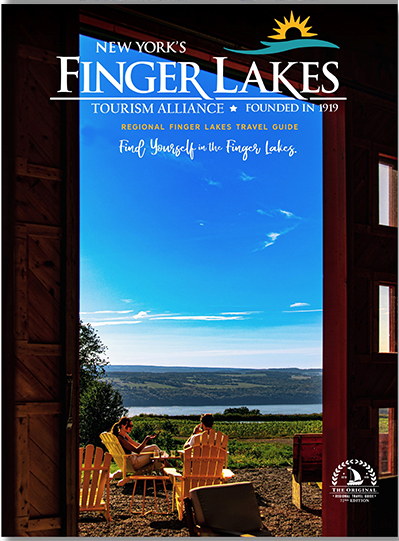Recovered in 2013, the film is now available digitally through
the George Eastman Museum
Rochester, N.Y., March 11, 2021—One of the landmark projects of the George Eastman Museum’s Moving Image Department was the preservation of Orson Welles’s 1938 comedy, Too Much Johnson. The film, once thought lost, can be viewed at eastman.org/TooMuchJohnson. The digitized version of the film includes new recorded voice-over commentary by Anthony L’Abbate, preservation manager, and Caroline Yeager, associate curator, of the George Eastman Museum. The online film also includes a new musical score provided by Philip C. Carli and inspired by Paul Bowles’s score for the original Mercury Theatre stage production.
“For the first time, people from all over the world will have access to this unique material with the voice-over commentary and musical accompaniment, previously only available for in-person screenings,” said Peter Bagrov, curator in charge, Moving Image Department, George Eastman Museum. “The original commentary was written by the museum and has been performed all over the world. It is essential for the understanding of this unfinished work by one of the great masters of cinema; the context it provides enhances the viewing experience for everyone.”
The voice-over commentary includes a story of the print’s discovery and the meticulous preservation process, as well as the history of the film’s creation—its casting, the filming locations in New York City (many of which are now gone), and why it never made it to the big screen.
Too Much Johnson was originally intended by Orson Welles to be used in conjunction with his stage adaptation of an 1894 play by William Gillette. His Mercury Theatre company planned to show three short cinematic segments as prologues to each act of the play. The slapstick comedy was meant to be shown with the accompaniment of music and live sound effects, but was never finished. Joseph Cotten was cast in the lead role, with supporting roles going to Mercury Theatre actors, including Arlene Francis (later of What’s My Line fame), Eustace Wyatt, Edgar Barrier, Ruth Ford, Mary Wickes, Virginia Nicholson, and John Houseman. The play opened, without the film prologues, for an out-of-town tryout at a theater in Connecticut on August 16, 1938, and flopped.
In October 2013, the George Eastman Museum, together with the National Film Preservation Foundation (NFPF), the Cineteca del Friuli, and Cinemazero announced the recovery of the long-lost Too Much Johnson. The nitrate work print of the film—left unfinished by the Mercury Theatre and never shown in public—was thought to have been lost in a fire that damaged the library in Welles’s home in the outskirts of Madrid in 1970.
The Eastman Museum—with financial support from the National Film Preservation Foundation and the Regione Friuli Venezia Giulia, and with technical expertise from Cinema Arts, a film laboratory in Pennsylvania specializing in the restoration of archival material, and Haghefilm Digitaal, a leading preservation lab in the Netherlands—completed the film’s preservation. The world premiere of Too Much Johnson was presented at Le Giornate del Cinema Muto, the world’s first festival of silent cinema, in Pordenone, Italy, on October 9, 2013. One week later, the Eastman Museum presented the US premiere at its Dryden Theatre.
The original nitrate print of Too Much Johnson now resides at the Louis B. Mayer Conservation Center, one of the George Eastman Museum’s repositories for its collection of 28,000 film titles.
About the George Eastman Museum
Founded in 1947, the George Eastman Museum is the world’s oldest photography museum and one of the largest film archives in the United States, located on the historic Rochester estate of entrepreneur and philanthropist George Eastman, the pioneer of popular photography. Its holdings comprise more than 400,000 photographs, 28,000 motion picture films and three million archival objects related to cinema, the world’s preeminent collection of photographic and cinematographic technology, one of the leading libraries of books related to photography and cinema, and extensive holdings of documents and other objects related to George Eastman. As a research and teaching institution, the Eastman Museum has an active book publishing program, and its L. Jeffrey Selznick School of Film Preservation’s graduate program (in collaboration with the University of Rochester) makes critical contributions to film preservation. For more information, visit eastman.org.
